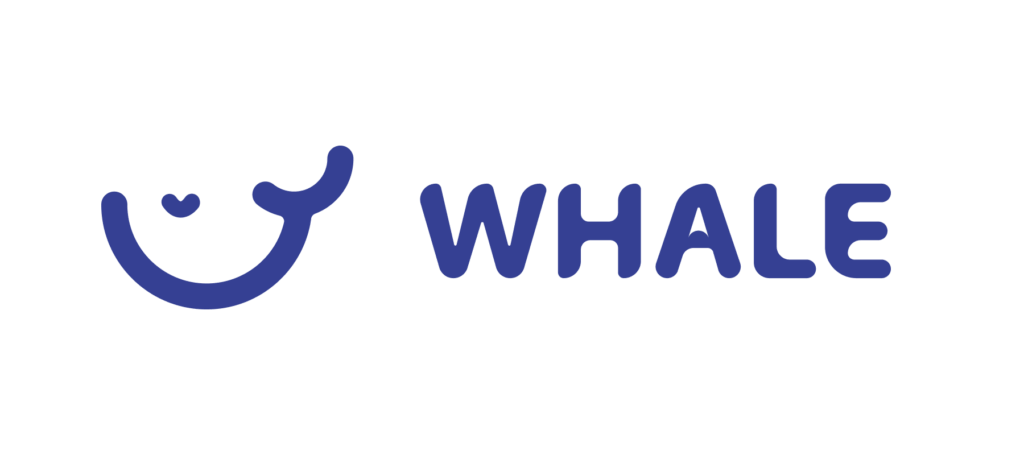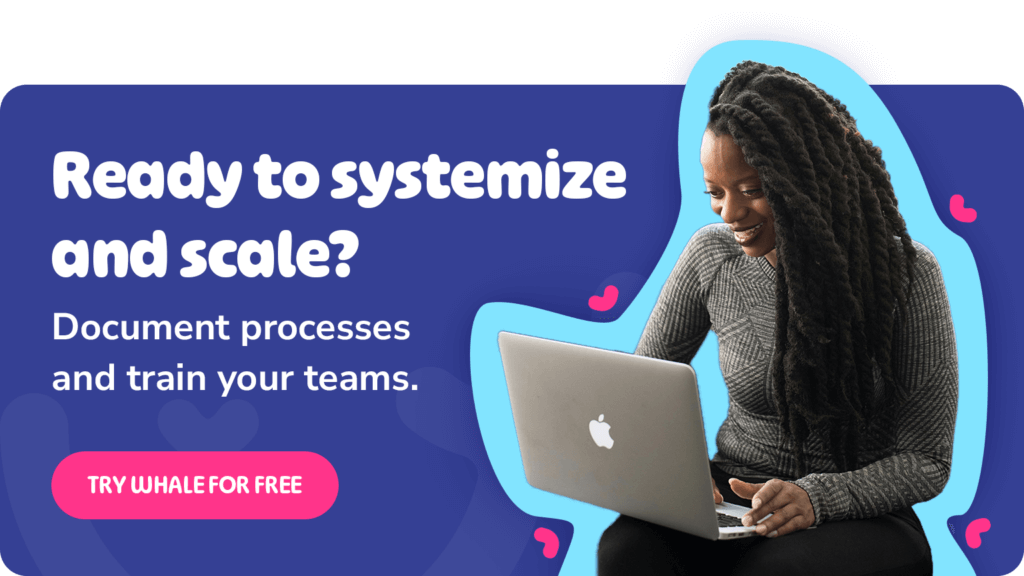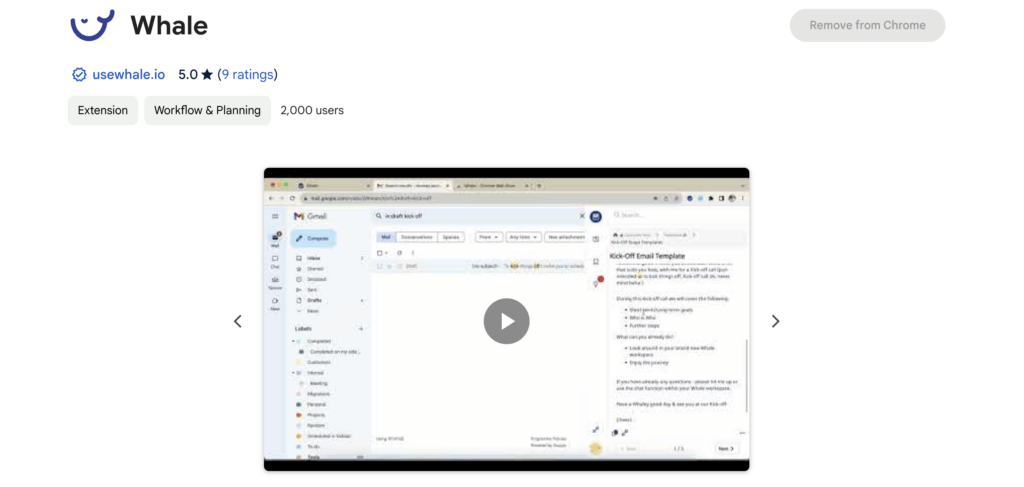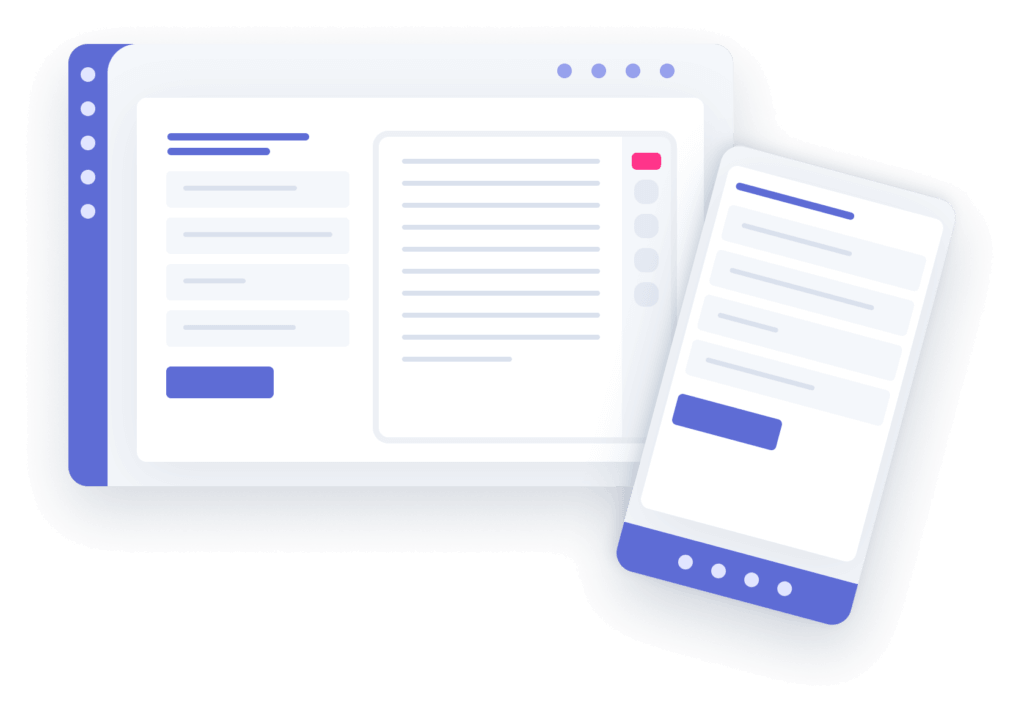What happens once you've documented your SOPs?
Congrats!
You’ve created some killer Standard Operating Procedures (SOPs), your processes are more streamlined than ever, and you’re ready to focus on SOP training. But there’s a problem: Your employees aren’t interested, and all your shiny SOPs are now gathering digital dust.
Sound familiar?
With companies losing over $31.5 billion every year by failing to share internal knowledge, this is an all-too-real problem.
What are the steps for SOP training?
SOP training typically involves the following key steps:
1. Identification of SOPs:
Identify and document all tasks and processes requiring SOPs.
2. Development of SOPs:
Write clear and concise SOPs. Each SOP should outline the purpose of the procedure, the materials needed, step-by-step instructions, safety considerations, and quality control measures.
Ensure all SOPs are accessible in formats that are easy to use and understand.
3. SOP Training Implementation:
Use formalized training to help train your teams on relevant SOPs and processes.Training methods can vary from in-app training to on-the-job training.
4. Assessment and Feedback:
Assess employees’ understanding and adherence to SOPs through quizzes, practical demonstrations, or performance evaluations.
Gather feedback from employees on the SOPs and training process to identify areas for improvement.
5. Continuous Improvement:
Regularly review and update SOPs and training programs to reflect any changes in processes, regulations, or technology.
Encourage a culture of continuous improvement where employees feel empowered to suggest improvements to SOPs and training methods.
How do SOPs increase productivity?
Standard Operating Procedures (SOPs) are not just documents; they are powerful tools that can significantly enhance your organization’s productivity.
But only if you use them to train your teams!
There are a range of use cases for SOPs. Here are just 3 ways SOPs help your team and business increase productivity;
#1. SOPs helps team get aligned
Complex workflows can lead to confusion, errors, and wasted time. SOPs provide a structured, step-by-step guide to completing tasks or processes.
By creating clear and concise procedures (and sharing them), you simplify these workflows, making them more efficient. Team members can then follow the SOPs without guesswork, reducing the chances of mistakes and delays.
For instance, in a real estate setting, a well-documented SOP can ensure that each customer is onboarded consistently, maintaining quality standards.
#2. SOPs improve employee onboarding
Let’s face it. Your new hires are Dorys and it’s not their fault!
New employees often face a steep learning curve when joining a company.
SOPs can be invaluable in expediting their training and integration into the team. By providing comprehensive onboarding SOPs, you enable newcomers to grasp their responsibilities quickly.
This not only saves time but also fosters confidence and competence among employees.
#3. SOPs foster a culture of continuous improvement
SOPs are not static documents; they evolve with your organization. By integrating performance metrics and feedback loops into your procedures, you can monitor the effectiveness of your processes over time.
This data-driven approach allows you to identify bottlenecks, inefficiencies, or areas where improvements can be made.
SOPs thus become a catalyst for a culture of continuous improvement within your organization.
How to use SOP Training for productivity?
The two biggest challenges for business leaders are building better operational processes (23%) and getting the most out of employees (30%).
You’ve already aced the first challenge and created some great SOPs — now it’s time to get the most from your employees.
Here’s how to ace your Standard Operating Procedures training and make sure those SOPs get used from day one:
#1. Get organized 📁
Maybe you have 5 people in your business, or 50 or more than 500. Whatever the size of your team, your business relies on the ‘way you do things’. In other words your business relies on processes.
This means within your business, you have a ton of knowledge and company information that needs to be organized before you can train your teams.
It can seem an overwhelming task to get organized but by following these 3 steps you’ll simplify things ALOT;
- Assign knowledge experts in your team
- Identify 20% of the knowledge that contributes to 80% of your business results!
- Document your processes and store them in a central repository like Whale which allows for efficient sharing.
Ready to empower your teams with great SOP training?
#2. Empower your teams 💪
First off, let’s jump into a quick psychology lesson to really get to know your teams — because the better you understand your employees’ needs, the better you can work together to leverage your processes.
And when it comes to human needs, research shows that all humans have the same innate psychological wishlists: Autonomy, a sense of belonging, and a mastery of their skills.
If your company can hit all three targets, employees will be able to do their jobs better, and gain higher job satisfaction, reduce burnout and boost productivity. Plus, you’re guaranteed to see employee retention skyrocket.
Here’s how to reflect these three psychological needs in your SOP training strategy:
- Autonomy — Give employees the tools and skills they need to complete tasks by themselves.
- A sense of belonging — Help employees feel part of the team by offering them the chance to get involved in creating and managing SOPs.
- Mastery of their skills — Focus on quality SOP training to make sure employees are the best they can be at each relevant process.
In other words, you can boost employee satisfaction simply by giving teams the tools and training they need to do their jobs properly. Pretty cool, right?
So, now you know how great processes can impact employee satisfaction, let’s get into some on-the-ground tactics to put this psychology lesson into action:
- Give full access: Use a knowledge sharing tool to give employees full access to the SOPs they need, when they need them (more on this in a minute 😉).
- Track SOP interaction: Get notified every time an employee reads an SOP via an automated tracking system. (And say goodbye to employees saying they’ve read a doc when they haven’t.)
- Implement process quizzes: Test employee knowledge by asking them to take a quick quiz that asks challenging questions about real-life SOP use.
- Practice, practice, practice: Make sure employees practice procedures as part of their daily activities, so they’re safe and up-to-speed at all times.
#3. Focus on accessibility 🔓
Now you know the best way to train employees, it’s time to dive into the key steps to make your SOPs as accessible as possible.
Hint – You can’t do it without the best SOP Software.
With 46% of Gen Z workers looking for a personalized employee experience, tailoring SOP access to each individual employee is more important than ever.
Here’s how to make documentation as accessible and personalized as possible:
- Personalized dashboards: Offer employees their own personalized dashboards via a smart knowledge sharing platform, so they can easily view the information most relevant to their role (and none of the info that isn’t).
- Tailored learning journeys: Bespoke learning paths are a great way to show employees they matter from day one. With the right knowledge platform, you can schedule specific SOP training for individual roles, so employees get what they need when they need it.
- Learning in the flow of work: These days, getting the information you need should be simple — and with the right tool, it is. The best knowledge training platforms include features (like Whale’s Web Extension) to help employees learn as they work. Simply log in to web-based company tools as usual, and benefit from a pop-up offering relevant contextual knowledge for that tool. For example, if an employee starts to write an email, a pop-up will appear with pre-made email templates they can use straight away.
PS – Install the Whale Chrome Extension to get started with training your team for free!
#4. Measure team progress 📈
It’s official. The workplace is tracking obsessed.
From customer data to employee behavior, these days companies know that tracking and measuring data is the best way to keep tabs on progress, improve, and update.
Once you’ve trained your employees in core processes, there are several things you can track to make sure your SOPs are working and actually being used:
- Compliance: Are employees using SOPs in the right way? Do they understand the processes? Which employees have (or haven’t) used each SOP?
- Frequency: How often are your SOPs being used?
- Results: Are you getting the desired results?
- Need: What are employees are searching for within your knowledge-sharing platform? Are there any gaps in your processes? Which SOPs do employees use (and which ones don’t they use)?
👉 Bonus tip: Whale allows you to track and measure all the data you need to understand how your SOPs are being used, how often, and where the knowledge gaps are.
#5. Update and improve 💪
SOPs should not be static documents; they should evolve as your organization grows and changes. Regularly reviewing and updating your SOPs can help identify inefficiencies and areas for improvement within your processes.
Encourage feedback from employees who work directly with these procedures, as they often have valuable insights into how tasks can be optimized. By fostering a culture of continuous improvement through SOP training, you can drive productivity enhancements over time.
And the best thing? The more you keep improving;
- The faster your can train new team members
- The better you can service customers
- The quicker you can create a competitive advantage
- The less time you have to waste on figuring things out!
The Bottom line?
SOPs help in;
- streamlining workflows,
- improving employee onboarding,
- enhancing task delegation,
- facilitating monitoring and continuous improvement,
- enabling effective crisis management,
- And giving your business a competitive edge.
But it’s important to make sure your teams are trained on your company’s procedured.
SOP Training will ensure that your teams are aware of your company’s procedures and will ensure team productivity.
Looking for a way to easily leverage SOPs across teams? Download our complimentary Ultimate Guide to SOP and Process Documentation
FAQs for SOP Training
What types of SOP training are there?
Depending on the phase of your business and where your employees are in their journey, there are 3 types of training you’ll want to consider;
Whilst the journey will dictate different content for each phase of the journey, remember that quality content doesn’t need to take time and needs to be engaging in order to engage team members!
How to use technology to boost SOP training?
The world’s best teams use technology. It’s because things go a lot quicker with technology.
Not only so SOP software and tools help you to create relevant documentation but they help reinforce knowledge.
Tools like Whale will even go as far to help assess knowledge using quizzes.
How do you measure SOP training?
1. Define Clear Objectives for Each SOP
Establish what each SOP is intended to achieve. Objectives could range from reducing process time, improving quality, and increasing customer satisfaction, to ensuring compliance with regulations.
Objectives should be Specific, Measurable, Achievable, Relevant, and Time-bound (SMART).
2. Develop Key Performance Indicators (KPIs)
Identify KPIs that directly reflect the objectives of your SOPs. For instance, if an SOP aims to reduce processing time, a relevant KPI could be the average time to complete a process before and after SOP implementation.
Other KPIs might include error rates, cost per unit of production, customer satisfaction scores, and employee productivity rates.
3. Use a Baseline Measurement
Before implementing new or revised SOPs, record current performance metrics to establish a baseline for comparison.
This baseline will allow you to measure the direct impact of SOPs on productivity and process improvements.
4. Use Employee Feedback and Engagement
Gather feedback from employees who are directly involved with the SOPs. Their insights can reveal issues not evident through data analysis alone and can provide suggestions for improvement.
Measure employee satisfaction and engagement levels, as SOPs that are well-received by staff are more likely to improve productivity.
5. Measure the impact on Business Objectives
Ultimately, measure how SOPs contribute to achieving broader business objectives, such as revenue growth, market share expansion, and customer loyalty.
Aligning SOP performance with strategic goals ensures they are contributing to the overall success of the organization.
Is there a checklist for SOP training?
Before Training:
- ✅ Define Training Objectives: Determine the specific goals and outcomes you want to achieve through SOP training.
- ✅ Identify Target Audience: Determine who needs to be trained and their level of familiarity with the processes.
- ✅ Assign knowledge experts in your team to take ownership for creating documentation.
- ✅ Identify 20% of the knowledge that contributes to 80% of your business results!
- ✅ Utilize SOP software that facilitates employee training.
- ✅ Create documentation that knocks your employee’s socks off!
During Training:
- ✅ Give everyone access to the relevant information.
- ✅ Automate training workflows.
- ✅ Assess Comprehension: Conduct quizzes or assessments to gauge trainee understanding.
After Training:
- ✅ Certification: Award certificates or recognize employees who successfully complete SOP training.
- ✅ Ongoing Support: Offer post-training support, such as mentorship or access to SOP resources.
- ✅ Continuous Improvement: Gather feedback from trainees to improve the training process and review SOPs as necessary based on feedback and evolving processes.
- ✅ Regular Refresher Training: Schedule periodic refresher training to ensure continued understanding.
- ✅ Feedback Loop: Maintain an open feedback loop with employees to address any issues or improvements related to SOPs.
Key Terms & Further Reading on SOP Training
Get documenting & training NOW
What is your greatest challenge?
SOP & Process Documentation
Use Whale to create SOP & Process Documentation and centralize everything in an easily accessible single source of truth.
Employee Onboarding & Training
Whale is the fastest way to get your team aligned. Discover how Whale boosts team performance and ensures new hires excel from the get-go.
Companies on EOS ®
Whale is the all-in-one system for teams running on EOS® to help document your processes, train your teams, and build a foundation for growth.








